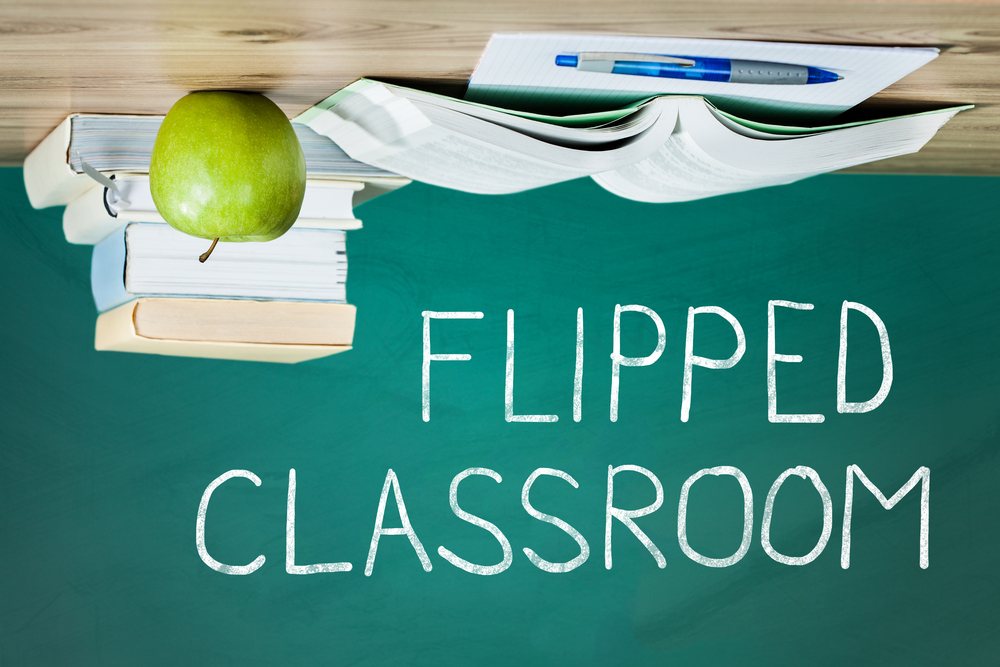
The Flipped Classroom Approach, what’s all the fuss about?
Many educators are familiar with the notion of a ‘Flipped Classroom Approach’: The Flipped Model has been adopted across a wide range of educational contexts, and English Language Teaching is no different.
So, what is it? Simply, it’s an approach that involves the reorganisation of what happens in class time and outside of class time. The traditional notion of classroom-based learning is turned on its head: One commonly-quoted definition is that homework becomes schoolwork, and schoolwork becomes homework.
In a conventional classroom, content delivery happens during the class, when learners are expected to acquire knowledge in the classroom with (from) their teacher. The time left for practice activities, assimilation and the application of new knowledge is squeezed, which means that learners are often left to do these activities as ‘follow up’ for homework by themselves – without the support of their teacher and peers.
The Flipped Classroom Approach tries to overcome these problems. It’s strongly associated with blended learning, and one basic way to flip your classroom involves putting content onto online videos (for example using screencasts), which students are invited to work through before they attend your classroom session. Proponents of the Flipped Classroom Approach argue that by inverting what happens in the classroom, in-class time can now focus on active learning and student-centred strategies, such as discussions and task-based learning, leading to an improvement in student engagement, motivation, attendance and performance.
Thus in the Flipped Classroom model, students are able to access content in their own time, at their own pace, reviewing it as many times as necessary before they come to class, armed with their own questions and ready to put their new learning into practice.
It’s clear to see that a key purpose of the flipped approach is to move students away from a passive learning experience towards active learning, with all the associated collaboration and peer learning that goes with it, coupled with a similar move away from a teacher-centred approach towards a more facilitative role.
We could argue that this is just good teaching. I’m a big fan of active learning. I’ve been involved in English language teaching since the 1990s, and even way back then, when I first set foot in the classroom, I knew that those learners who came to class having done some work in advance (“pre-reading”, anyone?), those who were happy to work collaboratively, and those that took ownership of their learning were far more likely to succeed than those that needed spoon-feeding. Surely we’ve come a long way across all educational sectors, in our move away from the ‘sage on the stage’ to the ‘guide on the side’.
Nonetheless, an increasing number case studies are emerging where flipped learning as a pedagogy is being evaluated more rigorously, and it’s clear that increasing numbers of teachers are adopting (at least some of) the practices associated with the Flipped Classroom Approach. It also becomes ever easier to create, store and share online content and blended learning is a widely accepted teaching model in itself.
Angela Buckingham is an Academic Developer working in Higher Education in the UK with over twenty five years of experience in ELT as a classroom teacher, teacher trainer, and writer. Courses for OUP include the best selling Passport series for Japan, the third edition of Business Venture, level 5 and level 6 of Oxford Discover Grammar (primary) and the Beginner and Elementary levels of new edition International Express. Angela has an MA in TEFL.


Compared to when I first got into teaching English in ‘02, the spread of online homework has made flipping classrooms a little easier, with children anyway. Homework that was meant to be done as a follow up can Bowles easily be assigned beforehand, which means kids come to class with much of the lesson already in their heads. It saves a lot of time and makes those precious teaching minutes all the more useful.
Hi Mark, thanks for posting. Sounds as though you have some lovely motivated students- or that you are managing to pitch flipped material at the appropriate level with interesting content.. which is keeping them engaged. Brilliant! What sort of platform are you using for the online materials? Videos, screencasts, an online classroom?
[…] Flipped Classroom Approach: What is all the fuss about? Oxford University Press ELT. 19 February 2018, https://teachingenglishwithoxford.oup.com2018/02/19/flipped-classroom-approach/ […]
[…] https://teachingenglishwithoxford.oup.com2018/02/19/flipped-classroom-approach/ […]